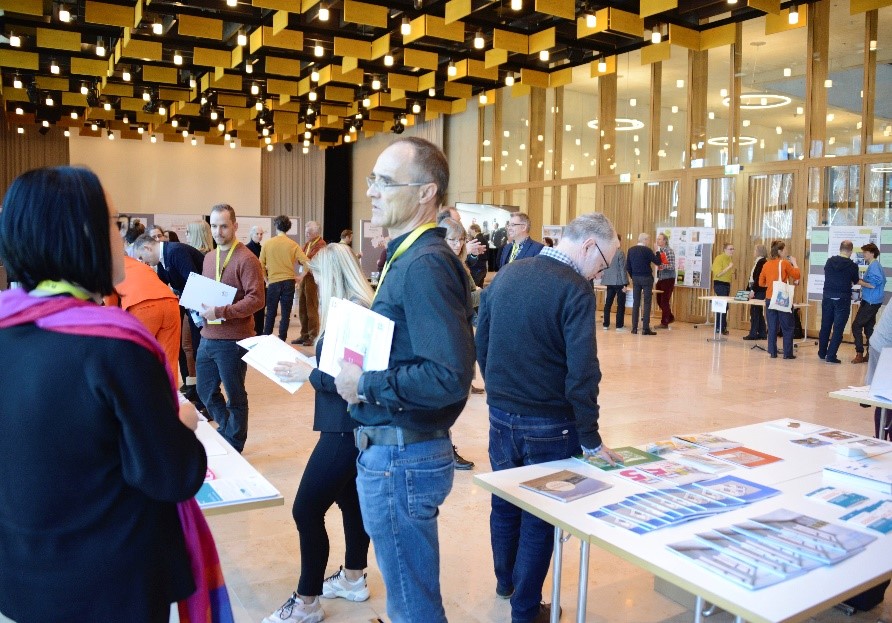International collaboration in higher education - Designing tomorrow's school spaces
Ulrich Kirchgässner, you’re in charge of “PULS+”, a collaboration project funded by Erasmus+ and Movetia. Can you tell us something about it?
The PULS network is behind the PULS+ project: PULS is the acronym for “Professionelle Unterstützung von Lern- und Schulraumentwicklung” (Professional Support for Learning Space and Classroom Development). PULS was launched in 2015 by people from Germany, Italy/South Tyrol, Austria and Switzerland in view of the fact that extensive investments in school construction were – and still are – pending in the participating countries. And that for such building processes the central question is how educational ideas and concepts are implemented architecturally and spatially. This makes participation processes necessary or rather, before and during the construction phase, there has to be dialogue between all the players from education, architecture and administration.
The EU collaboration project has now developed a two-year university continuing education programme. Its objective is to increase the quality of cooperative learning and school space development processes through good process support and to involve schools as co-responsible and co-decision-makers from the very beginning. In terms of content, it is about learning, space and process development, as well as reflection, supplemented by workshops, real laboratories, internships and excursions. For us as a Swiss project partner, it is also a defined goal to integrate the subject of “learning and space” into studies for teachers.

Why are funding programmes for international collaboration projects at university level important in view of the global challenges we face?
The issue of education is a global challenge, and all countries have education systems and a mission to shape global participation – economic, cultural and social – through education. So it makes sense to learn from one another, across national and cultural borders. Our PULS+ project is international, but also regional, as it is based on the German-speaking school area. The participating countries Germany, Austria, Italy/South Tyrol and Switzerland are extremely similar in terms of their education systems, e.g. in their historical origins and their federalist structures. What is also comparable is a change in the understanding of education – moving away from homogeneous structures to forms of opening, individualisation and inclusion – which in turn implies new demands on educational spaces.
Using the “German-speaking area” as a starting point made sense, but at the same time it became clear in many places that this limitation can only be temporary because education systems in other countries are both enriching and challenging. This learning from one another is probably the outstanding quality of the international collaboration projects.
How did the collaboration come about?
Since as far back as 2013, we have been carrying out research and development projects entitled “School Architecture in Dialogue” at the Primary Education Institute of the FHNW School of Education. This was how contact was established with the emerging “PULSverbund” (PULSnetwork) and the corresponding contacts.
With the implementation of the PULS+ project, an extended network has now been established in the field of learning space development and the question is how these people and the enormous potential of experience, competence and creativity will continue to organise themselves after the project is concluded. The first instruments for this have already been developed in the PULS+ project, namely a cooperation platform (“PULSkooperation” – PULScooperation) and an interactive database (“PULSatlas”), in which schools are presented with their pedagogical concept, their goals and their current spatial substance.
What benefit does the FHNW School of Education gain from a strategic partnership?
That's obvious: contacts, partnerships and content-related cooperation have been established and the topic of learning and space has become an established part of university teaching at the Primary Education Institute. In this way, the view of one’s own educational area is broadened and supplemented by new perspectives.
Such “enrichments” became particularly clear at the symposium “Sustainable participation from school (re)construction to the development of learning spaces” held at the FHNW School of Education in Muttenz in February 2020, where the expertise from the “PULSverbund” (PULSnetwork), from Switzerland, from neighbouring countries and also from different disciplines was brought together. New cooperations and agreements for further projects were established, especially within the framework of an explicit networking forum.

How do you rate Movetia’s support for your project?
The support we received from Movetia was consistently constructive and thought-provoking. Formal issues were solved cooperatively and the content perspective was always kept in mind – we are certainly full of praise for their involvement.
This interview is part of a series of meetings with project leaders within the framework of strategic partnerships. Find more examples of cooperation.
Movetia supports cooperation
Swiss higher education institutions are eligible to cooperate in a strategic partnership project with European institutions via the Swiss Programme for Erasmus+ Key Action 2.
Strategic partnerships are an Erasmus+ project format. They facilitate European cooperation at all levels of education. The institutions involved work together to develop innovative concepts, methods and instruments, share good practices and utilise synergies. This helps improve quality and strengthen international networks.
Cooperation projects are generally funded through lump-sum grants for specific budget items. The subsidy amount depends on the project duration, the planned activities and the project type.